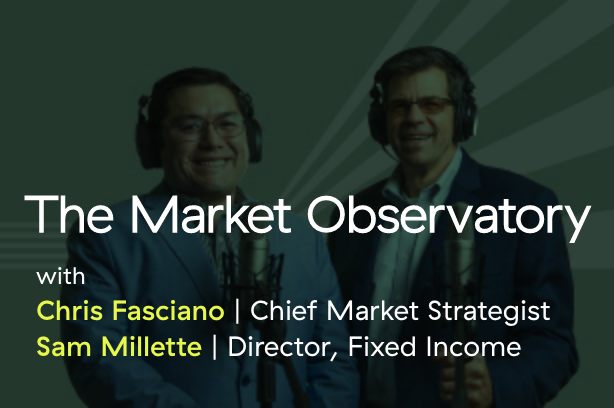 The markets are in the middle of a historic decline. Not so much in the magnitude—while we are approaching a bear market, these happen fairly regularly—but in the speed of the drop. We have rarely, if ever, seen this kind of a sudden decline, especially from close to record levels. People are nervous, of course, and understandably so. But that makes it even more important to take a step back and understand how we got here because that will inform where we are going.
The markets are in the middle of a historic decline. Not so much in the magnitude—while we are approaching a bear market, these happen fairly regularly—but in the speed of the drop. We have rarely, if ever, seen this kind of a sudden decline, especially from close to record levels. People are nervous, of course, and understandably so. But that makes it even more important to take a step back and understand how we got here because that will inform where we are going.
The short answer for the decline is tariffs. The White House has unilaterally imposed tariffs on essentially the entire rest of the world, raising overall trade barriers to levels we haven't seen since the 1930s. Other countries, notably China, have imposed tariffs in response, leading to fears of a wider trade war. Again, this is something we have not seen since the 1930s.
This all leaves us with two questions. First, why are tariffs so bad? And second, what will they mean going forward?
What’s the Damage?
For the first question, tariffs are economically damaging because they are a tax on trade. Companies that import items and are subject to the tariff will see their costs rise. They then have to choose whether to eat those costs—reducing their profits—or pass them along by raising prices. Either way, the result is bad for the economy and the market, as either profits go down or inflation goes up.
Tariffs can also disrupt supply chains. Companies that have been, for example, assembling and selling imported parts may not have the liquidity to absorb the higher costs. Again, reduced capacity can result in lower availability or higher inflation. So, for the economy and the financial markets, tariffs are a significant negative shock. While there may be offsetting benefits in the longer term, the short-term effects are playing out right now.
In some respects, we have seen this movie before. The best recent example of this type of economic shock—although from a very different cause—was the pandemic. There, too, we saw availability go down and costs go up. We saw inflation and disruption of the economy. And, of course, we saw a similar drawdown in markets. That kind of exogenous shock is what we are seeing here and now as well, and it’s what markets are reacting to.
How Do We Recover?
Because of that, we can draw some lessons from the past. When the shock passed, when the virus became less of a threat, the economy and markets recovered. The same happened in 2008, looking back a bit farther, where we had a financial shock, which, when it passed, allowed for recovery. In both cases, the damage was substantial, but the recovery was real.
This also gives us some comfort with the current situation. In both 2008 and the pandemic, these really were systemic, worldwide crises that no one knew how to resolve. In this case, however, the damage is coming not from a debt-mediated collapse of the financial system, nor an incurable pandemic, but from governmental policy actions. As such, while the damage is under government control, so ultimately is the recovery. Policy changes got us into this situation, and policy changes can get us out. That is potentially a much more comfortable place to be in than 2008 or 2020. So, that is what I will be watching: how the tariff policies evolve here and abroad. That will determine where we end up.
The good news is that the U.S. economy is still robust, as shown by last month's strong job growth. We could recover quickly if policy resolves to a normal level before enough damage accumulates. The bad news is that consumer confidence is eroding on the bad headlines and market declines, so the damage has started. Depending on how policy evolves, we can still likely shrug much of this off—but that won't last forever. And the longer it takes, the longer the recovery will be.
Adapting to Change
Even in that case, though, this too will pass. The American economy excels at adapting to big changes, and this is a big one. We will adapt, though, over time. As we saw in 2008 and 2020, we will get through this. And as investors, with a long-term horizon, that is what we should be focused on.


 Print
Print

